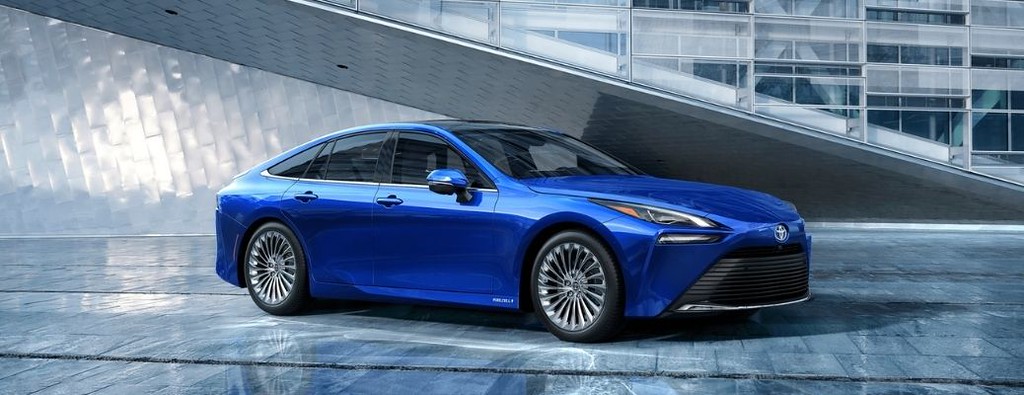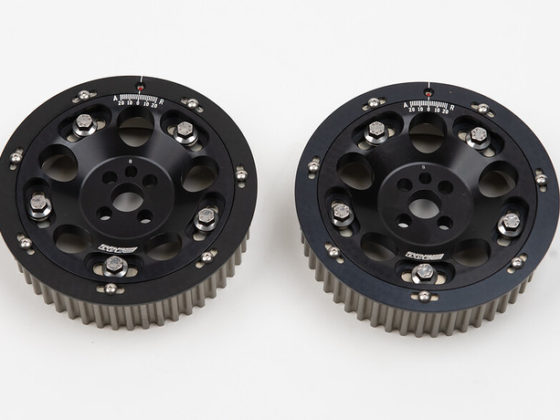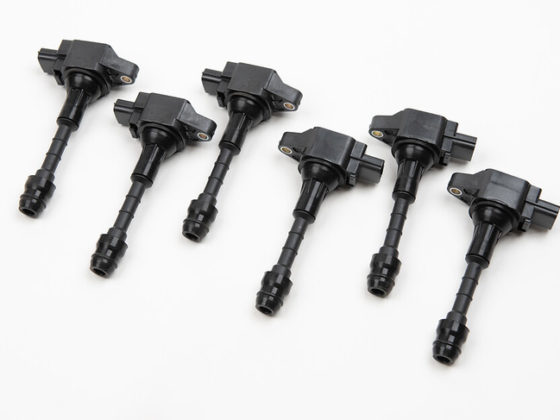Match Between System and the Real World
The design should speak the users’ language. Use words, phrases, and concepts familiar to the user, rather than internal jargon. Follow real-world conventions, making information appear in a natural and logical order.
A lot of the Mirai’s composition mirrors today’s internal combustion (IC) vehicles. The powertrain placement, “exhaust”, and basically the “guts” of the car are all in sync with how any IC is laid out internally. Alignment with what today’s drivers are most familiar with is the key to getting even the biggest of laggards to give hydrogen a chance. There is one quirk, however, that’s totally unique…this car pees. Yes, it’s exactly what you think I mean. Without going into the whole spiel on the engineering, basically, water is the “waste” product once the fuel cell has finished its process. Hydrogen is the main input, electricity is the output, H2O is the byproduct. You can see the water stream out from under the Mirai at the end of your drive. Quirky, but hey, it’s better than spewing out a pollutant.
8/10
Consistency and Standards
Users should not have to wonder whether different words, situations, or actions mean the same thing. Follow platform and industry conventions.
Although the current hydrogen infrastructure leaves little to be desired, when it comes to “refueling”, this process couldn’t be simpler. One of the core elements of HCD is change management. There are 5 major categories when it comes to innovation adoption: innovators, early adopters, early majority, late majority, and laggards. In order to successfully shift the majority to alternative fuels, we must create products and interfaces that incorporate what’s most familiar. Toyota did a great job with this aspect of making owning a fuel cell vehicle slightly less intimidating by copying the gasoline refueling process and pasting it on the Mirai. It’s not easy to convince a multi-generational population with diverse innovation adoption levels to incorporate anything besides what they’ve been accustomed to for decades. The gas station experience with the same hardware is a subtle but important touch that sparks confidence with even the laggards that they, too, can contribute to a healthier planet.

7/10
Flexibility and Efficiency of Use
Shortcuts — hidden from novice users — may speed up the interaction for the expert user such that the design can cater to both inexperienced and experienced users. Allow users to tailor frequent actions.
The interface kit isn’t a Toyota in-house design. It’s a kit made by JBL, though, not a signature design for the Mirai. I’d expect as much for the money, but nope. You’ll find this exact same digital experience on the RAV4, Corolla, the whole gamut. You’ll even notice that said kit will help you find one of the 10,000+ California gas stations…no, not specifically one that hosts hydrogen. Just a gas station in general. For a car that does carry some impressive powertrain technology, the UI leaves a lackluster feel…although I will say, the startup imagery is quite lovely.
The backseat experience also feels rather luxurious with the embedded center console controls. I’d like to see that carry over upfront as well. This could be a great car to be picked up in as an environmentally conscious Director of a company, especially with the incentives. I’d recommend it as part of the rideshare fleet, but not as part of the loaner car fleet.
6/10
Aesthetic and Minimalist Design
Interfaces should not contain information that is irrelevant or rarely needed. Every extra unit of information in an interface competes with the relevant units of information and diminishes their relative visibility.
Let’s start with the exterior design. At first glance, the Mirai has strong nods to both the Prius and the Lexus ES. These both track, as the Prius was the Mirai’s initial predecessor (both in design and as Toyota’s innovator of the house), while the ES embodies that sense of technical luxury with the elongated wheelbase that really glides to make an entrance. However, something both the ES and Prius share and mutually excludes from the Mirai: a brand-specific, custom infotainment setup. Both are relatively standard: CarPlay/Android Auto, an interface that inherits the brand’s overall design elements, etc. So, of course, one would think the Mirai shares this as well, especially considering the price point. There are bits and pieces about the holistic design that hit, and pieces that miss.
6/10




1 comment
Had the pleasure of working at a Toyota Dealership during the Mirai launch in 2015? Really ahead of its time…and it still is…unfortunately.